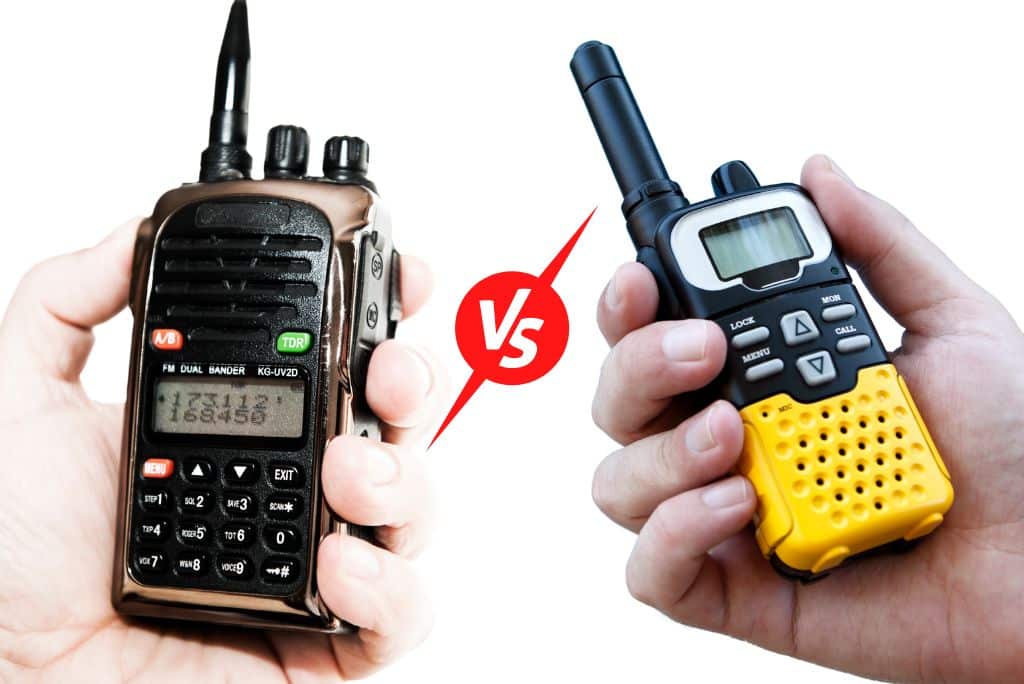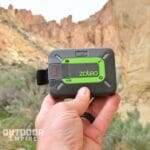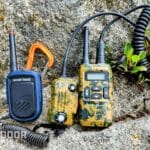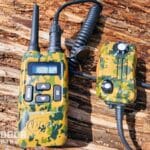Have you ever heard about how all bourbon is whiskey, but not all whiskey is bourbon? When it comes to walkie-talkies and two-way radios, we enter into a similar realm where things can be a bit confusing.
All walkie-talkies are two-way radios, but not all two-way radios are walkie-talkies. There are a few main differences that make a clear distinction between the two things.
What type of radio is a walkie-talkie?
The terms “two-way radios” and “walkie-talkies” are often used interchangeably, but this isn’t always the case. A two-way radio is simply a radio that can both receive and transmit signals.
Walkie-talkies receive and transmit signals, so they are a type of two-way radio. However, a handful of key features distinguish walkie-talkies from other two-way radios.
- A walkie-talkie is portable
- A walkie-talkie is handheld
- A walkie-talkie only allows one person to transmit at a time
Walkie-talkies are also cheaper, have fewer features, and have a shorter range than most two-way radios.
Think about the name. If you can walk and talk with your two-way radio, it’s probably a walkie-talkie.
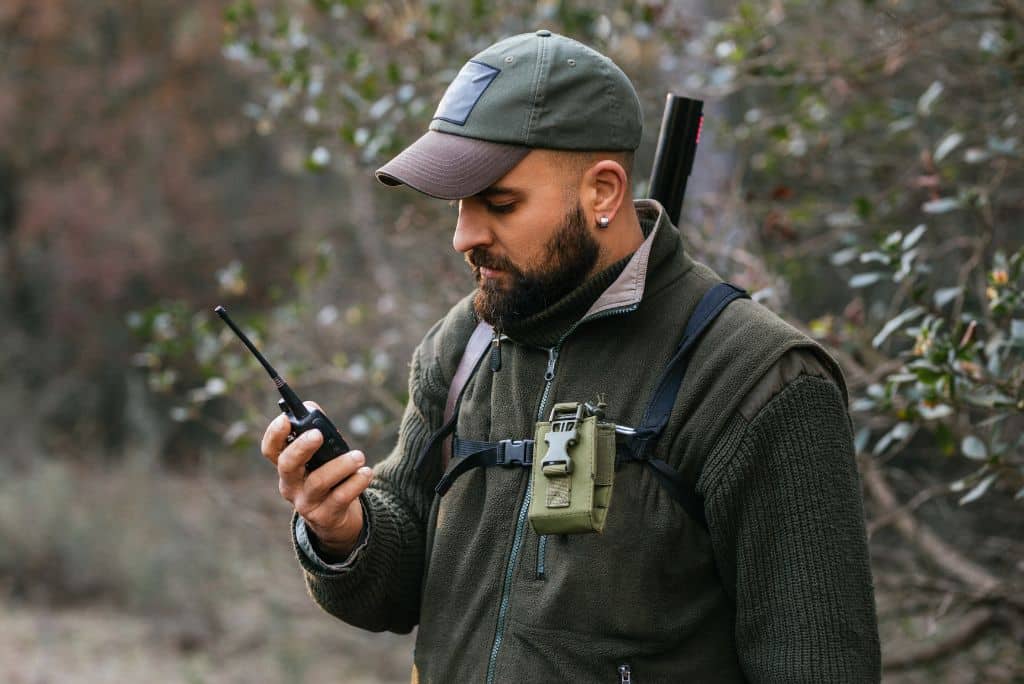
Both terms can fit together at times, but some two-way radios, like desk radios, ham radios, or vehicle-mounted radios aren’t handheld and portable so they can’t be considered walkie-talkies.
Many two-way radios are made for specific purposes like emergency response, law enforcement, or other government uses. These will often be tuned to licensed radio frequencies that are not open to the public. On the other hand, walkie-talkies are built on public frequencies open to civilian use.
Walkie-talkies, and other two-way radios, have a strict protocol that exists to make communication as clear as possible. Many two-way radios are used in emergency services, so knowing the correct walkie-talkie lingo will help in any situation.
How does a two-way radio work?
As we mentioned, two-way radios can send and receive radio signals. You may also stumble across the term transceiver. It’s a combination of transmitting and receiving, or in other words, a two-way radio.
This dual-purpose functionality sets them apart from a typical radio system that will only receive signals and give you the music for your morning commute.
Without trying to complicate it even further, there are two different modes that two-way radios can operate in.
- Half duplex is when the radio sends and receives signals one at a time.
- Full duplex refers to the radio that will be both receiving and transmitting simultaneously.
With walkie-talkies, you need to remain in “receive mode” to hear messages coming in. If you push the talk button, the incoming message will be immediately cut off. That means walkie-talkies (most of them) are operating on a half-duplex system.
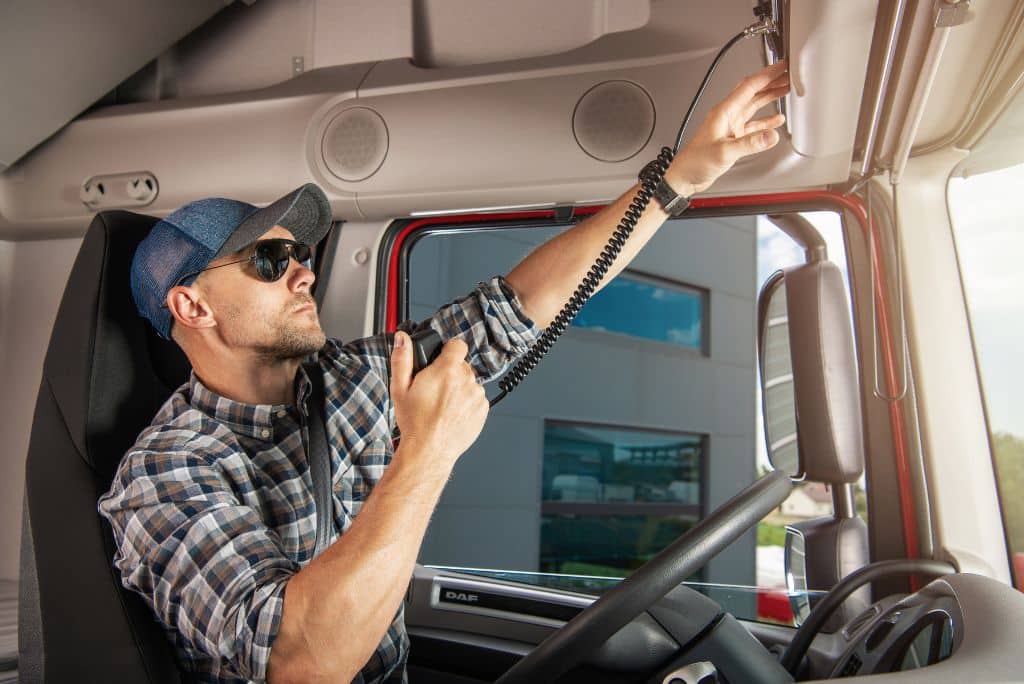
Personal Radio Services Explained
All two-way radios, including walkie-talkies, operate on Personal Radio Services. PRS is communication happening on short-range, low-power communication with devices that can operate on either a one or two-way system.
There are multiple types of personal radio services: Citizen Band (CB), Family Radio Service (FRS), General Mobile Radio Service (GMRS), Multi-use Radio Service (MRS), and Low Power Radio Service (LPRS).
If you’re diving deep into it here, the two main things to keep in mind are that you need a license from the FCC to utilize devices that operate on the GMRS, and LPRS can only be used with one-way devices.
One of the main advantages of using a two-way radio over something like a cell phone is that you don’t need a tower nearby in order to use it. Two-way radios send their signals directly rather than bouncing off another transceiver first. In remote areas, a two-way radio will be significantly more reliable than a cell phone.
Bringing both the transceiver and receiver together into the same place as the communicator is exactly where the history of two-way radios begins. It’s one piece of tech that’s been around since the early 1900s that is still incredibly reliable rather than outdated.
Can you use any two-way radio as a walkie-talkie?
There are loads of different two-way radios out there, but as we’ve mentioned, each one isn’t considered a walkie-talkie. Try to think of “two-way radios” as an umbrella term for various radios. Walkie-talkies just happen to sit underneath that umbrella, alongside other radios.
There are three main types of two-way radios: handheld, mobile, and base stations.
| Handheld and Portable | Differences from Walkie Talkies | |
| Walkie Talkie | Yes | N/A |
| Ham Radio | Sometimes | Not always handheld |
| CB Radio | No | Not portable, multiple transmissions at a single time |
| AM/FM Radio | No | Operate from a radio tower, not handheld or portable |
Many two-way radios are mounted in vehicles (think truck drivers or police cruisers). Not fitting into your hand immediately disqualifies these from being considered walkie-talkies. Even some ham radios are more “portable” but aren’t handheld, disqualifying them as well.
There are, however, handheld ham radios that would make the cut as a form of a walkie-talkie.
Then there are base stations that can’t move around or fit into your hand. These are found in places like dispatch stations for emergency services. There’s more access to a larger transmitter/receiver, so these will have much larger ranges.
This is all to say, no, not all two-way radios can be used as walkie-talkies. Many have been adapted to fit into your hand, but not all of them will ever make it that far. Ham radios and many emergency services need a massive antenna to reach as far as possible, which can’t be folded up and tucked into your backpack like a walkie-talkie can.
What is the difference between a one-way and a two-way radio?
One-way and two-way radios have their time and place to shine, but they are entirely different. A one-way radio will only receive or transmit a radio signal. It can’t do both.
Think about the radio in your car. You can’t send a message back to whoever is bringing you the top 100 pop tunes of the season, which means it’s a one-way radio.

